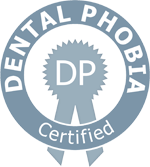Conscious/IV Sedation

Sedation uses medication to put the patient in a very relaxed, dreamlike state whilst having treatment carried out; you are conscious and can follow instructions that your dentist may give; but you do not feel the stress and anxiety that you might otherwise feel. There are advantages for the dentist too: sedation means that treatment is easier to perform, and that more can be achieved in one session, reducing the number of sessions needed to carry out a course of treatment.
Sedatives may be taken in three forms:
- tablets prescribed for you to take the night before and/or the morning before your appointment; you will need someone to take you to and from the appointment.
- inhalation sedation, also known as nitrous oxide or more commonly, as 'laughing gas'. This pleasant smelling gas has the effect of eliminating pain, and bringing on a warm and comfortable feeling. Dentists prefer nitrous oxide because of its extremely fast effect – just 5 minutes after you inhale it - and also because of how quickly a patient recovers from the gas.
- intravenous sedation: the sedation drug is administered into a vein using a very thin needle that is encased in a soft plastic tube. When the needle is removed from the vein, it leaves the plastic tube behind, and this tube is used to administer the drug. The sedative takes effect very quickly, and your dentist can adjust the dosage to bring about the level of sedation that is required. IV sedatives can lead to deeper levels of sedation than other sedation methods but are not suitable for use on all patients; neither is this method suitable for needle-phobic patients.
Not everybody is suited to sedation; those who are already taking some sort of medication must alert their dentist before accepting oral sedatives, as well as those who have a history of allergic reactions to medication. Your dentist will be able to advise on your particular case.
